Here is a complete Google video of Envisioning Sustainable Northampton, the final presentation of The Notre Dame Northampton Charrette. This video is 2 hours and 33 minutes long, and may also be viewed at Vimeo video. You may download a PDF of the slides here. The video was recorded by Adam Cohen. [1/9/09 update: Northampton Community Television separately recorded this presentation and provides a Vimeo video of their own.]
With an introduction by Joel Russell, chair of the Northampton Design Forum, the presentation takes place during 0:00:00-0:48:05. It is followed by a Q&A period with the audience. For more information about the Notre Dame proposals, visit The Notre Dame Northampton Charrette website.
0:58:32… Notre Dame Professor Philip Bess: “This is not a proposal for growth. It’s a proposal for how, if Northampton grows, how you should grow.”
Here is the handout distributed by Notre Dame at the presentation, also downloadable as a PDF.
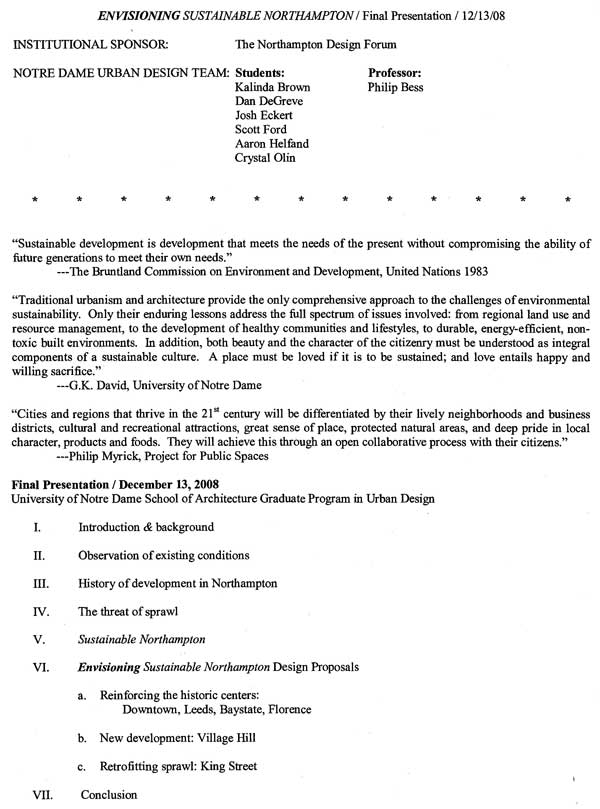
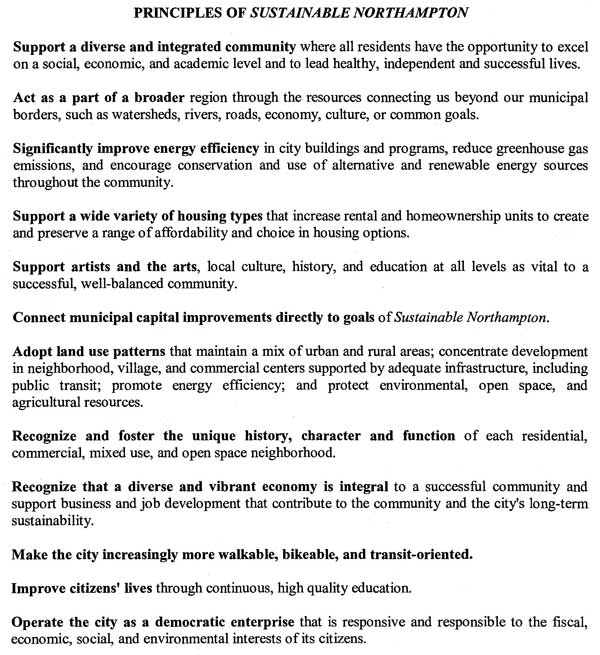
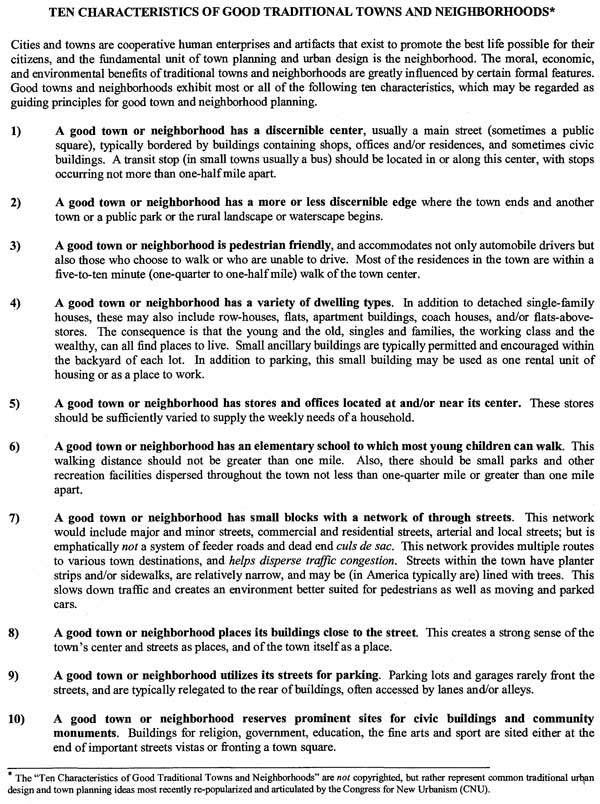
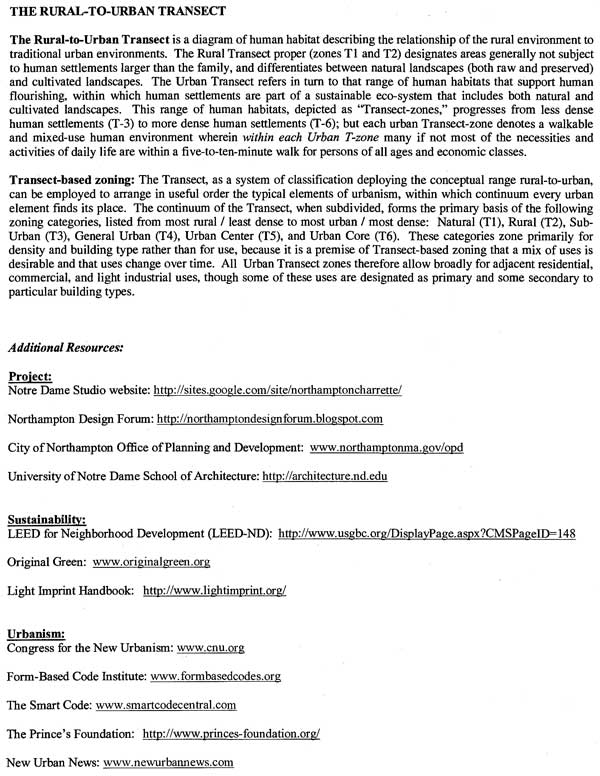
See also:
Northampton Design Forum Website
Envisioning Sustainable Northampton: Notre Dame Urban Design Presentation – Slides
[These two slides contrast ‘sprawl’ growth with Notre Dame’s suggested alternative. Download all 97 slides (PDF, 16.9MB)]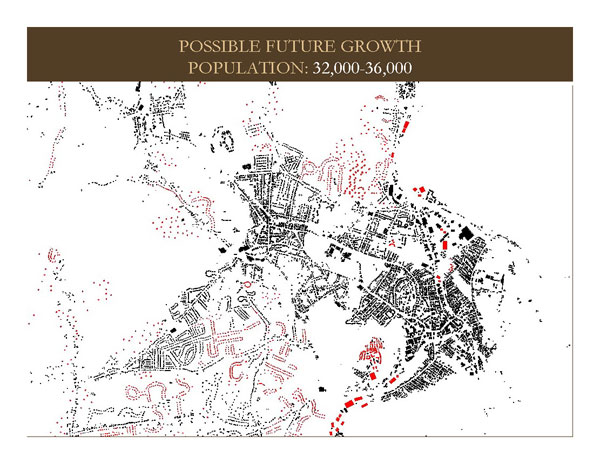
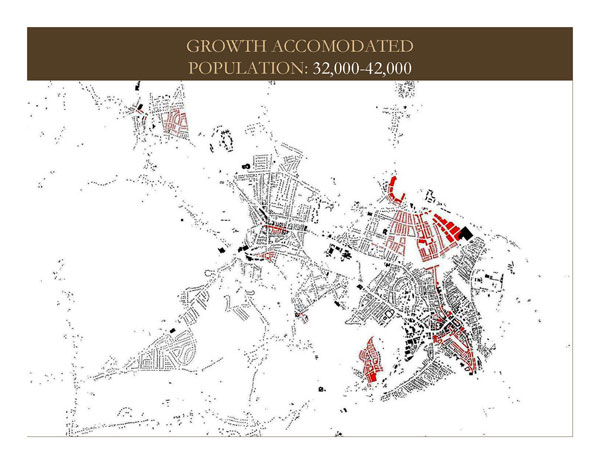
Gazette: “University of Notre Dame students unveil suggestions for Northampton” (12/15/08)
“We need the widest range of ideas before we go into a project and this is what we don’t get,” said city resident Frances Volkmann, a member of Design Northampton. She called the work of the Notre Dame group a model for other communities in thinking about the principles of sustainable development…
Notre Dame Professor Philip Bess said the students’ proposals are based on the concept of “traditional urbanism,” which the team believes is the best way to preserve the unique character of Northampton while also offering a route to sustainable development.
This approach includes the creation of many public boulevards and squares within each of the six distinct areas of the city; it features core areas that are walkable, self-sustaining centers with a mix of commerce, residential, green space, and durable buildings that are aesthetically pleasing. There was no doubt that the group dislikes spraw…
Republican: “Students propose a future ‘Hamp” (12/14/08)
Notre Dame Northampton Charrette Critical of Hospital Hill Plans, Fleshes Out Alternative
Update from Notre Dame; Critique of Northampton Sector Diagram
Gazette: “A long-term look at city’s design: Students focus on Northampton as multiple centers” (9/12/08)
Notre Dame Pitches Urban Design Studio to Northampton
Video: Notre Dame Urban Design Studio Presentation
Video: Design Northampton Week Opening Presentation
Design Northampton Week: Full Schedule and Handout from Opening Presentation
Complete Slides from Northampton Design Week Opening Presentation
Video: First public “in-process” presentation and feedback session for Design Northampton Week
Video: Second public “in-process” presentation and feedback session for Design Northampton Week
Video: Third public “in-process” presentation and feedback session for Design Northampton Week
Video: Fourth public “in-process” presentation and feedback session for Design Northampton Week
Video and Slides: Final Presentation of Design Northampton Week
Smart Growth vs. “Smart Growth”
Final Sustainable Northampton Plan Now Ready to View
Planning Board Adopts Sustainable Northampton Plan
Valley Advocate Critiques Sustainable Northampton Plan
(10/2/08)
In many ways, what Professor Bess and his urban design team were
attempting to do in one week was what the city had been laboring to
achieve over the past three years…
Since the [Sustainable Northampton Plan] was released [last January],
city officials have peppered their language with the word
“sustainable,” and the plan has been invoked often as a reason for
whether or not to proceed with a development…
Though filled with photographs, Sustainable Northampton has only one
land use map, showing a satellite’s view of the land within city limits
and how it might be developed. Otherwise, there are no diagrams in the
80-page document…
…without a clear vision, the document, packed with jargon, undefined
terminology, unexplained acronyms, and third-party reports that aren’t
properly referenced, is a confusing mess. Far from providing guidance,
it raises hundreds of questions and a good deal of doubt that the
city’s design decisions are being made by anyone that has a clue where
we’re going…
Reviewing the diagram of the planned single-use sprawl [on Hospital
Hill] a mile and a half from downtown, the mayor remarked on how well
the architect used urban design principles by packing a lot of homes
into the design. Density of construction is, of course, only one
principle of urban design, but without regard for mixed-use, walkable
neighborhoods, packed housing can also be a ghetto.
As they have done with much of the Sustainability Plan, it seems likely
city hall will adopt the urban designer’s terminology, twist its
meaning to fit their own needs, and add the jargon to the next revision
of a plan already crammed tight with words that lack meaning,
describing visionless goals.
Grasping the Sustainable Northampton Vision: We Need Pictures
Photo Essay: 10 Reasons People Like Trees Around Them; Will the Sustainable Northampton Plan
Put Urban Trees at Risk?
“Planning for Trees” by Henry Arnold, Planning Commissioners Journal, January/February 1992
A
recent survey by the American Forestry Association of twenty American
cities found that, on average, only one tree is planted for every four
removed…
Our urban centers need to become more attractive to
help counter the continuation of a sprawl pattern of development. If
the appeal of low density, widely scattered development is derived from
the need to be closer to nature, then making trees an integral part of
the urban habitat will help make our town and city centers more
desirable places to live and work. It is profoundly important to see
this linkage between making cities and towns more “liveable” and
stemming the continued spread of scattered development across the
countryside.
Greening Smart Growth: The Sustainable Sites Initiative
The
presence of natural elements has several implications for personal and
community security. Shared green spaces, particularly those with trees,
provide settings for people to interact and strengthen social ties.
Residential areas with green surroundings are associated with greater
social cohesion in neighborhoods, and neighbors with stronger social
ties are more likely to monitor local activity, intervene if problem
behaviors occur,[48] and defend their neighborhoods against crime.[49]
Residents of buildings with greater tree and grass cover report fewer
incidences of vandalism, graffiti, and litter than counterparts in more
barren buildings.[50] Likewise, a study comparing police reports of
crime and extent of tree and grass cover found that the greener a
building’s surroundings, the fewer total crimes were reported.[51]